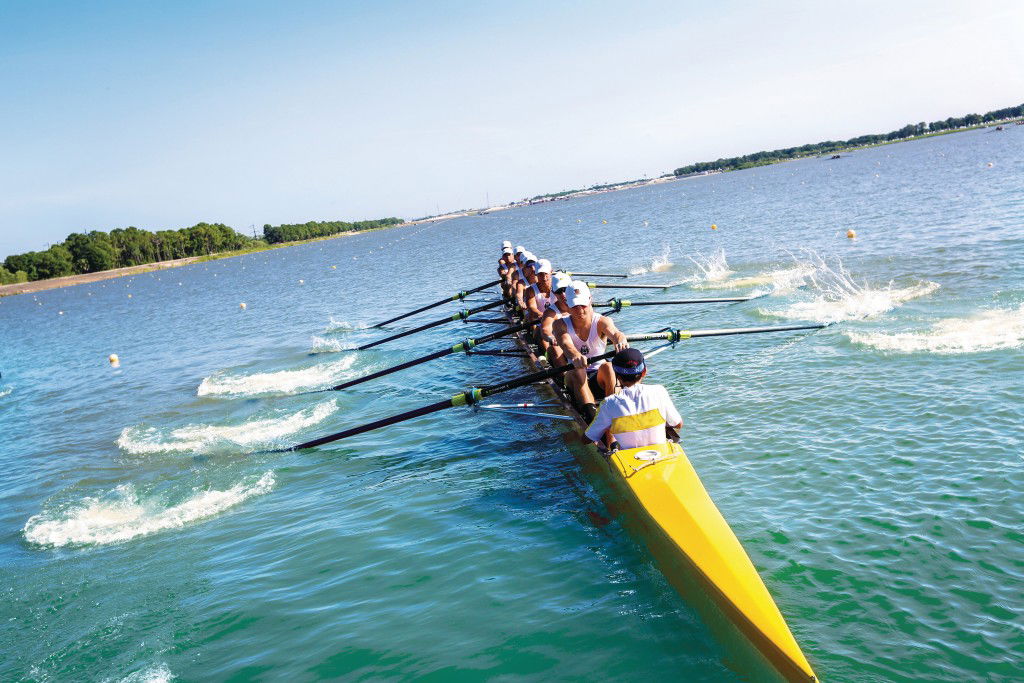ROWING

HISTORY
The history of rowing as a sport has prevailed it as one of the oldest traditions in the world. What began as a method of transport and warfare eventually became a sport with a wide following, and a part of the cultural identity of the English speaking world. Rowing in its modern form developed in England in the 1700s. As a sport, it involves watercraft known as shells (usually propelled by eight oars) and sculls (two or four oars), which are raced mainly on inland rivers and lakes. The term rowing refers to the use of a single oar grasped in both hands, while sculling involves the use of two oars, one grasped in each hand. The history of rowing, as a sport and not just as a way to get around to places, is almost as old as civilization itself. Once used to be a widely practiced sport many centuries ago, rowing has now declined in popularity due to the rise of other sports such as basketball. Despite that, rowing has still been practiced many parts of the world; in some areas, it is considered a tradition. Here are the other interesting facts about rowing! Rowing in six- and eight-oar boats began as a club and school activity for amateurs about this time in England and somewhat later in the United States. Organized racing began at the universities of Oxford and Cambridge in the 1820s, culminating in 1839 in the Henley Regatta (from 1851 the Henley Royal Regatta), which has continued to the present. Rowing as sport developed from the 1830s to the ’60s in Australia and Canada and during the same period became popular throughout Europe and in the United States. Today rowing is an amateur sport and an Olympic event. When Pierre de Coubertin created the Modern Olympics, he modelled the International Olympic Committee on the Henley Stewards. The stewards organize the Henley Royal Regatta, one of rowing's most prestigious events.
WHAT IS ROWING?

Rowing, propulsion of a boat by means of oars. As a sport, it involves watercraft known as shells (usually propelled by eight oars) and sculls (two or four oars), which are raced mainly on inland rivers and lakes. The term rowing refers to the use of a single oar grasped in both hands, while sculling involves the use of two oars, one grasped in each hand. It differs from paddling sports in that rowing oars are attached to the boat using oarlocks, while paddles are not connected to the boat. Rowing is divided into two disciplines: sculling and sweep rowing. In sculling, each rower holds two oars—one in each hand, while in sweep rowing each rower holds one oar with both hands. There are several boat classes in which athletes may compete, ranging from single sculls, occupied by one person, to shells with eight rowers and a coxswain, called eights. There are a wide variety of course types and formats of racing, but most elite and championship level racing is conducted on calm water courses 2 kilometers (1.2 mi) long with several lanes marked using buoys. Nature has a very big effect on rowing. Because you directly interact with the nature and what you are doing in rowing is something against the nature, you are doing something that is increases your fitness level and health. Think of an environment full of oxygen and clean air, you directly start the day happy and motivated. Rowing 토토사이트 also improves and sometimes requires strong core balance, physical strength, flexibility, and cardiovascular endurance. You can read about many benefits from it as I have talked in my other pages, and interesting background history of rowing that really captured my attention.
